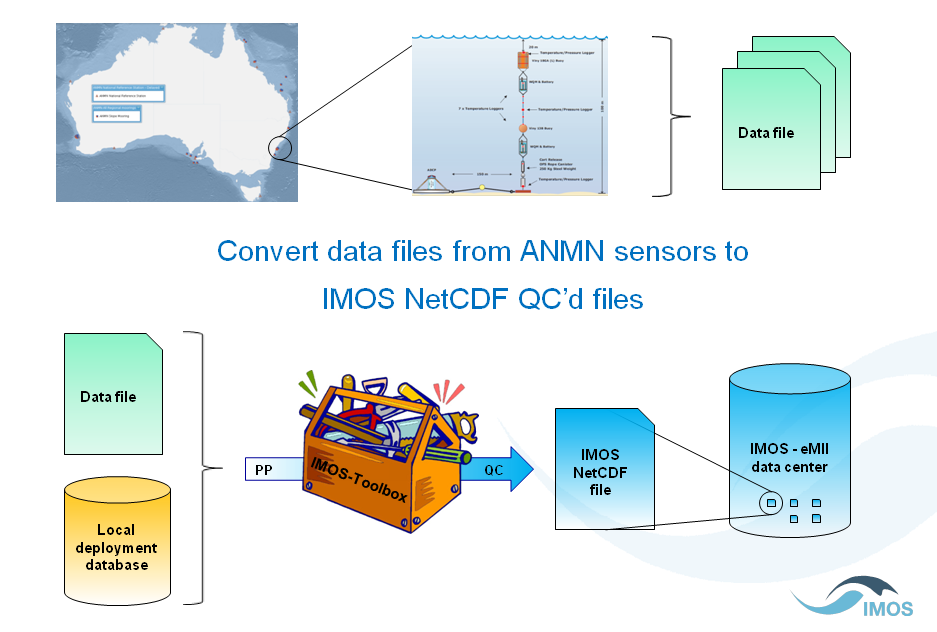-
Notifications
You must be signed in to change notification settings - Fork 31
Home

IMOS is an initiative of the Australian Government being conducted as part of the National Collaborative Research Infrastructure Strategy.
The IMOS Matlab Toolbox aims to provide an automated, easy to use interface for converting raw instrument data into IMOS compatible Quality Controlled NetCDF files, ready for handover to AODN. The toolbox is designed by ANMN and AODN to process data which is manually retrieved from long-term mooring sites.

Typical usage of the Toolbox would proceed as follows:
- Import and pre-process instrument data set applying calculations or transformations like local to UTC time conversion.
- Automatically quality control data using automated and semi-automated QC procedures such as the impossible date and location checks, in/out of water flagging, outlier, spikes, and flatlines detections.
- Manually quality control data via an interactive display.
- IMOS compliant set of NetCDF files are output and include both original and modified plus QC'd data sets.
The best way to start is to download the latest stable version of the toolbox and to follow the installation documentation.
Please note that, if you are using the toolbox as a stand-alone library, Matlab R2018b+ is required (since version 2.6.1). This is not a requirement for the stand-alone application (binary packages/executables).
If you wish to use a database to populate meta-data parameters, you will need to create a database file that is compatible with the IMOS schema. A template also exists (OceanDB2018), and you can populate it with some metadata following this manual. Support is currently limited to MS-Access databases or a similar CSV file following the IMOS schema.
Important: OceanDB2018 (MS-Access or CSV) deployment database is available with dummy examples. Toolbox versions below 2.3 will not work with this database. If you wish to use this new deployment database, we recommend you use the latest toolbox version.
You may also need some information located in the wiki pages, particularly configuring and using the Toolbox.
Finally, you may also be required to know a bit of the IMOS NetCDF Conventions. The toolbox repository also holds several information regarding IMOS facility, platform codes and instrument details.
If something goes wrong, send AODN an email or submit an issue.
See the overview for more details or navigate through the following links.